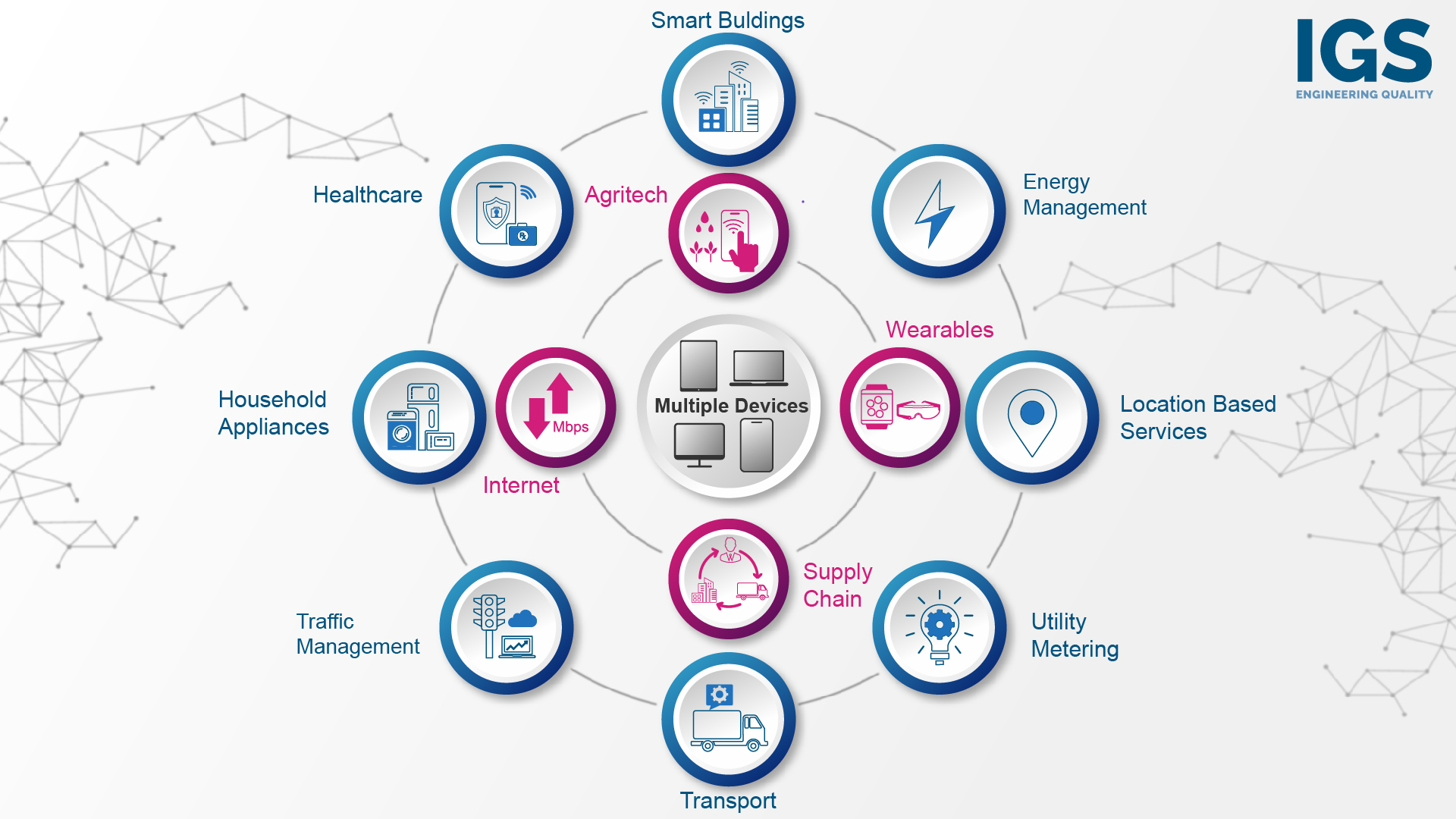Digital Transformation in Telecom Industry with Quality Engineering

This article will explore the evolution of quality engineering in the telecom industry, outline the key challenges it faces, Latest Tech, and suggest strategies for assuring quality.
The Evolution of Quality Engineering in Telecom
Quality Engineering in the telecom sector has significantly evolved, moving from traditional manual testing to a more sophisticated, integrated approach that encompasses a wide range of services to ensure superior product quality and customer satisfaction. This evolution is highlighted through:
- Functional Services: Automation Testing, Manual Testing, Regression Testing, Mobile Application Testing .
- Non-Functional Services: Performance and Load Testing, Security Testing, Usability Testing, Accessibility Testing.
- Advanced Services: AI Testing, RPA Testing, Digital Testing, DevOps and Agile Testing, Blockchain Testing, IoT Testing.
The transition into a user-centric model has seen Quality Engineering aligning with principles such as usability testing, user feedback analysis, and performance monitoring to ensure exceptional user experiences. Moreover, the integration of artificial intelligence (AI) and machine learning (ML) for test automation, predictive analysis, and anomaly detection marks the current landscape of Quality Engineering. This shift not only enhances the efficiency of testing processes but also ensures that telecom services can meet the rapidly growing demands for faster internet, such as the anticipated mass-market 5G coverage by 2024
Key Challenges Facing Telecom Quality Engineering
In navigating the complex landscape of Quality Engineering within the telecom sector, several key challenges emerge that require strategic attention:
Bridging Knowledge Gaps:
- The disconnect between academic research and practical needs in the field is widening, necessitating more accessible and interpretable techniques for experiments, particularly for those new to the field .
- A significant number of practitioners struggle with utilizing tools for the design and analysis of simulation and computer experiments, underscoring the urgent need for more user-friendly resources .
Technological and Operational Hurdles:
- Rapid technological advancements, coupled with the geographical and regulatory diversity, present substantial challenges in telecom infrastructure deployment, demanding hefty financial investments and specialized industry knowledge .
- The telecom industry grapples with the demand for new services, big data management, network security concerns heightened by the Internet of Things (IoT), and the essential shift towards digital and analytics skills .
Customer and Environmental Considerations:
- Enhancing customer experience remains a pivotal challenge, with statistics indicating that smartphone users require multiple attempts over several days to complete interactions with telecom companies, affecting satisfaction levels.
- The rise of the conscious customer who demands green and ethical practices poses both a challenge and an opportunity for telecom companies to adapt and potentially benefit from cheaper, green energy solutions.By addressing these multifaceted challenges, telecom companies can pave the way for more robust and efficient quality engineering practices that not only meet current demands but are also future-ready.
Strategies for Effective Quality Engineering in Telecom
To ensure the delivery of high-quality engineering in the telecom sector, adopting a multifaceted approach is essential. This involves:
- Quality Management Systems (QMS): Developing and maintaining systems to measure and control product quality, including APQP and VOC.
- Innovative Testing Approaches: Utilizing AI and ML for predictive analysis and defect prediction. This includes focusing on probabilistic logic and integrating AI-based algorithms for performance engineering and self-healing automation frameworks .
- Collaboration and Continuous Learning: Fostering relationships with development teams, sharing expertise, and prioritizing continuous learning to adapt to new technologies and methodologies .
Moreover, it’s crucial to:
- Implement Test Automation: To ensure repetitive processes are checked for glitches, reducing effort and improving efficiency.
- Adopt Cross-Functional Teams: Where developers and testers are skilled in each other’s roles, facilitating a more efficient feedback process.
- Prioritize Security: Ensuring the security and privacy of user data is paramount, alongside continuous improvement practices to optimize systems based on performance data
By focusing on these strategies, telecom companies can navigate the challenges of quality engineering, ensuring their services meet the demands of modern consumers and technological advancements.
Latest Tech in Telco – Enabling Large-Scale IoT Adoption Across Industries
Narrowband-Internet of Things (NB-IoT) is a low-power wide-area network (LPWAN) technology designed to connect low-power IoT devices over a large area. This technology is poised to revolutionize various industries by enabling widespread IoT use cases.
Applications of NB-IoT
NB-IoT offers advantages that make it suitable for a wide range of applications, including:
- Smart Metering: NB-IoT is ideal for automatically reading meters for electricity, gas, and water usage. This enables remote monitoring and improved billing efficiency.
- Smart Cities: NB-IoT can be deployed in smart city solutions such as smart parking, streetlight management, and waste bin monitoring. This technology allows for better resource management and optimized city operations.
- Agriculture: In the agricultural sector, NB-IoT can be used to monitor haystack temperatures, preventing fire risks, and track livestock using gate sensors.
- Manufacturing: NB-IoT can connect industrial machinery and equipment, enabling remote monitoring and predictive maintenance.
- Asset Tracking: This technology can be used to track the location and status of assets in real-time, improving logistics and supply chain management.
Benefits of NB-IoT
NB-IoT offers several advantages over other IoT connectivity solutions, including:
- Low Power Consumption: NB-IoT devices are designed to consume minimal power, enabling battery life of over ten years in some cases. This makes it suitable for applications where frequent battery changes are impractical.
- Wide Area Coverage: NB-IoT signals can penetrate deep underground and function well in enclosed spaces, making them suitable for various use cases.
- Cost-Effective: The low power consumption and potential for long battery life contribute to the overall cost-effectiveness of NB-IoT solutions.
- Secure and Reliable: NB-IoT leverages licensed spectrum, ensuring reliable data transmission and reduced interference. Additionally, it inherits the security features of mobile networks.
- Scalability: NB-IoT can support a large number of connected devices within a single cell, making it suitable for large-scale deployments.
NB-IoT is a promising technology that addresses the challenges of connecting a massive number of low-power devices over a wide area. With its low power consumption, wide area coverage, cost-effectiveness, and security features, NB-IoT is poised to play a significant role in enabling widespread IoT adoption across various industries.
Conclusion
Throughout this exploration of quality engineering in the telecom world, we’ve traversed from its evolutionary strides to the challenges and strategies pivotal for navigating the future of telecommunications. Emphasizing the transition from manual to sophisticated, integrated approaches underscores the telecom industry’s commitment to ensuring high-quality service and customer satisfaction. Moreover, the highlighted case studies not only demonstrate successful applications but also illustrate the tangible benefits of adopting advanced quality engineering practices, such as enhanced product quality, process efficiency, and increased consumer satisfaction.
As we move forward, it’s clear that the continual adaptation and integration of technological advancements, alongside strategic solutions to existing challenges, are essential for telecom companies to thrive. These efforts are not just about meeting the current demands; they’re about setting a foundation for a future where quality engineering leads the charge in delivering exceptional telecom services. The journey of quality engineering in the telecom sector shows a promising path forward, one that requires constant learning, innovation, and collaboration to ensure that the industry can not only meet but exceed the expectations of its consumers.
